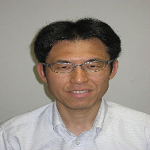
Title: Numerical Analysis of Through-plane Separator Shape on Temperature Distribution in Single Cell of PEFC Operated at Higher Temperature than Usual
Keynote Talk
Dr. Akira Nishimura
Mie University, Japan
Abstract
According to NEDO road map 2017 of Japan, polymer electrolyte fuel cell (PEFC) system is required to be operated at 363 K and 373 K for stationary and mobility applications, respectively. I already reportetd that the combination of thin polymer electrolyte membrane (PEM) and thin gas diffusion layer (GDL) is effective to obtain high power generation performance at higher tempreature. In this study, the impact of separator thickness on distribution on reaction tempearature (Treact) changing relative humidity (RH) of supply gas and initial operation temperature (Tini) with using thin PEM and thin GDL. As a result, wider tempreature distribution is confimed in the case of thickness of 2.00 mm while the tempreature increases along with the gas flow through the gas channel by approximately 2 K in the case of thikcness of 1.50 mm and 1.00 mm. In the case of thickness of 1.50 mm amd 1.00 mm, the impact of RH on distributions of Treact – Tini is larger with increase in Tini. The tempearture difference between the maximum and minimum temperature decreases with increase in Tini irrespective of RH as well as separator thickness excluding the case of anode of 80 %RH and cathode of 80 %RH using separator thickness of 2.00 mm. It is revealed that the wider temeprature ditsribution causes the decrease in power genreation performance. This study can propose the thin separators such as thickness of 1.50 mm and 1.00 mm are not suitable for higher opreation than usual.
Biography
Dr. Akira Nishimura is associate professor in Division of Mechanical Engineering at Mie University, Japan. He received the B.S. Eng., the M.S. Eng. and Dr. Eng. degrees in Chemical Engineering from Nagoya University, Japan in 1995, 1997 and 2000, respectively. He worked at Center for Integrated Research in Science and Engineering, Nagoya University as research associate from 2000 to 2002. He moved to Mie University in 2002 as an assistant professor and promoted to associate professor from 2014. He has published 81 peer-reviewed journal papers. His current researche is clarification on heat and mass transfer mechanism of PEFC.

Title: Session Title: Enabling Operationalization of MLOps Automation at Scale
Invited Speaker Talk
VirooPax Mirji
WinWire Technologies, United States
Abstract
Several organizations do not consider the implications of deploying models in production with scalability & high data quality in mind. They remain confined to sandboxes or work within silos in an organization with no defined process for automating/managing the MLOps lifecycle. The total value of upcoming AI applications in healthcare, life sciences, and pharma is enormous. But how can any company build, deploy, and maintain 10,000 custom models without hiring 10,000 machine learning engineers? Why do many proof-of-concept implementations and demos do not make it into production? While a team of engineers can build a one-off application, we still need better tools and automation to make this work scalable and economically viable. Also, if we want to relieve data scientists and engineers from such repetitive and tedious tasks, we should consider a better MLOps approach to scale the commercialization of AI projects.
Biography
VirooPax Mirji is a AI/Data Sciences customer-experience innovator at heart, & VP in WinWire Practices team helping customers compete with digital-natives in their digital transformation journey to the cloud. While at WinWire, he has leveraged AI & Automation in a Data-first consultative manner for the COVID-19 and Digital HealthCare domains. Previously, at Infosys as an Innovation Partner, he has run major Innovation consulting programs using Stanford’s ‘Design-Thinking’ techniques for the likes of AT&T, TMobile, Warner Bros, Warner Music, Sony, Directv, Telstra, Proximus, Liberty Global' Telenet where he delivered solutions around AR/VR/HoloLens, NUI, AI/ML, MetaVerse, Blockchain and 5G applications. A public award includes the CableShow’s CIO.IT award for : 'Elevating the Experience: New Ideas for Delivering Best-in-Class Service' using Speech-to-text, NLP, Sentiment analytics for better Customer Experience (V.o.C. Idea Engine). Other ground-breaking innovations include activities for Napster P2P music SaaS, FB’s SocialTopUps JV and Visa International’s global Billing/CRM program. Global application experiences for last 31 years includes world-wide customers in Americas, Europe, APJ and Australia/NZ.
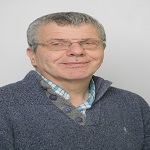
Title: Bismut way of the Malliavin Calculus for non-markovian generators: an introduction
Plenary Talk
Prof. Rémi Léandre
University of Franche-Comté, France
Abstract
We do a review of some of our works relating the Malliavin Calculus of Bismut type for non-warkovian semi-groups (Big order generators) when there is no stochastic process besides.
Biography
Rémi Léandre has written about 170 papers about the applications of the Malliavin Calculus, the white noise analysis and the stochastic differential geometry to analysis, geometry and mathematical physics. He has organized several conferences in France, published in Astérisque (French Mathematical Society) two books in honour of J.M. Bismut wit X. Dai, X. Ma, and W. Zhang in 2009. He received in 1988 Bronze Medal of C.N.R.S and in 1989 Rollo Davidson Prize for various works on hypoelliptic diffusions.
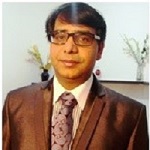
Title: Prospective and Challenges of micro-plasma technology
Invited Speaker Talk
Dr. Rajneesh Kumar
Banaras Hindu University, Varanasi, India
Abstract
Contracted plasma sources or micro to nano plasmas have found a number of significant applications. Microplasmas can be defined as plasmas where at least one plasma dimension is in the sub-millimeter range. During the last decade a number of microcavity plasma devices have been developed. Examples are microhollow cathode (MHC) discharges and cathode boundary layer (CBL) discharges. The advantage of this technology is that large numbers of miniature atmospheric-pressure non-equilibrium discharges can be operated in parallel. Applications include emitters for visible and UV radiation, photodetectors, sensors, decontamination, surface modification, etching, film deposition, generation of nanoparticles. Novel applications are expected from the combination of microreactor technology with non-equilibrium plasma chemistry. Further it is interesting to mention that the implementation of semiconductor and microelectronics and MEMs microfabrication techniques has resulted in the realization of microplasma arrays as large as 250,000 devices. Fabricated in silicon or ceramics with characteristic device dimensions as small as 10 µm and at packing densities up to 104 cm−2, these arrays offer optical and electrical characteristics well suited for applications in medical diagnostics, displays and environmental sensing. Several microplasma device structures, including their fundamental properties. Moreover, microdischarge has also been used to form plasma column in the plasma photonic crystal for study the positive and negative refraction of x-band microwave. For this purpose, three electrodes are made by molybdenum foil and alumina used as a dielectric to make sandwich of electrodes with the hole of diameter 0.5 to 1 mm. High temperature glue is used to pack the electrodes and alumina. Two DC power supplies are used to produce voltage differences between electrodes. Typical cathode voltage is 800 V and anode voltage varies from 1 to 2 kV maintaining current up to 15 mA. Argon and helium gases are used as background gases in the glass chamber. Experimental results will also be discussed in present talk.
Biography
Dr. Rajneesh Kumar has completed Ph.D from Institute for Plasma Research, Gandhinagar, India. He was post-doctoral fellow in LAPALCE, University of Toulouse France where he worked on plasmas as metamaetrials, plasma photonic crystal for microwave invisibility. He was project scientist in Indian Institute of Technology, Kanpur, UP. He was post-doctoral research associate in Masdar Institute of Science and Technology, Abu Dhabi, UAE. He was assistant professor in Dr. Harisingh Gour Central University, Sagar. He is associate professor in Banaras Hindu University since 2017.He has published four books, one chapter and more than 25 papers in reputed journals.
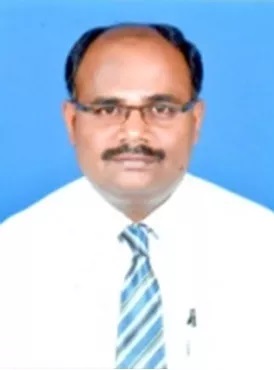
Title: Covid transmission Modeling- Insight analytical Mechanism of Infectious diseases
Keynote Talk
Dr. Basavarajaiah D.M
Karnataka Veterinary Animal and Fisheries Sciences University (B), India
Abstract
The present chapter describes various methods of gene sequencing and explores the point mutations of SARS 2Covidvirus. Data sets with different annotations were downloaded from NCBI virtual platform. The Denova and illumina methods were employed to extrapolate the point mutation of Covid19, as per the analysis of whole genome we noticed that, the similarity was 957 / 1330 (71.95%), number of mismatched: 373 (28.04%) and 5 (0.37%) mutant variants were seen (Analysis of data sets were done in R statistical software). Probability distribution like Cauchy, Exponential, Gamma, Log normal, Logistic, Poisson and Weibull distribution models were formulated to know the variation of genetic sequences at whole genomic level. Covid19 genetic data sets were subjected for New Predictive Sequencing model. The demonstrated models found to bestatistically more epoch and heavily concentrated on the analysis of long throughput datasets to know the trend and seasonal effect of Ascii score, the formulated predictive models is very useful to know the seasonal and random effect of Ascii and Pherd score by comparing the short and long through put datasets of whole genomic analysis inclusion with transcriptomics, proteomics and sequencing of amino acids etc., Correlation matrix was explored from whole genomics to know the distance of genome of different annotations, the mean distance of gene 15.21 with SD 0.93 was observed in USA and South Korea and also it was found to be significantly correlated (augmented) with virulence of virus and diseases pandemism at population level.
Biography
Dr.Basavarajaiah D.M working as an Associate Professor and Head , Department of Statistics and Computer Science, Dairy Science College, Karnataka Veterinary Animal and Fisheries Sciences University (B), Hebbal, Bangalore. My area of research heeds Statistical theory, Statistical modelling on high dimensional datasets of Agriculture, Engineering, Medicine, Veterinary and animal Sciences. Penned sixty eight research articles and five academic books. Serving as an editorial Board Member and Scientific Board advisor of Various International indexed journals. Life Member of various academic organizations. Honoured several accolades for my academic and research Excellency “Chartered Scientist award stalwart by Science Council, United Kingdom in Collaboration with Royal Statistical Society. Best Reviewer award -2016 ‘TRANS STELLAR’ Journal Publications and Research Consultancy ,TJPRC Ltd., (NAAS rated Journals), Fellow of Royal Statistical Society ,UK (London), Fellow of Mathematical Society ,UK (London), Bharathshikshratana and Indo-Dubai Achiever’s Pacific award honoured by Global Society of health and educational growth new Delhi, Best reviewer -2015, Best scientific Board advisor - 2016 and Best editorial Board Member awards bestowed by International academy of Engineering Science and Technology (IASET),USA.
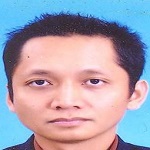
Title: TUNABLE Q-SWITCHED ERBIUM-DOPED FIBER LASER WITH METAL BASED SATURABLE ABSORBER IN CONJUNCTION WITH INTERFERENCE FILTER
Keynote Talk
Dr. Zairi Ismael Rizman
Universiti Teknologi MARA Shah Alam, Malaysia
Abstract
Cost-efficient, robust, and tunable laser systems are vital for a wide range of applications ranging from optical communication to sensing. This research aims to explore metal oxide nanoparticles and pristine (pure, original) metal nanoparticles as Q-switcher SA in tunable Erbium-doped fiber laser (EDFL) cavities. The generations of Q-switched pulses with a tunable output wavelength in 1.55 µm regions have been successfully demonstrated using a nickel oxide (NiO), vanadium pentoxide (V2O5), gold, silver, or titanium nanoparticles as SA. Sagnac loop mirror (SLM) and Fabry-Perot (FP) tunable bandpass filter (TBF) methods were employed for tuning the operating wavelength of the Q-switched lasers. For instance, a tunable Q-switched EDFL was successfully realized using a NiO SA in combination with TBF with 1 nm bandwidth. The wideband operation of NiO enables broadband tunability from 1535 to 1565 nm. At an operating wavelength of 1535 nm, the repetition rate increases while the pulse width reduces with increasing output power. The highest slope efficiency was 22.11% at the operating wavelength of 1540 nm. At 1565 nm wavelength, the highest pulse energy was obtained at a pump power of 37.7 mW. It is found that the TBF provides a wider tuning range with more efficient Q-switching compared to SLM tuning, which induced a higher cavity loss. These findings show that the metal oxide and pure metal nanoparticles based SAs have great potential for photonic applications. Such wideband tunable Q-switched laser could provide a simple and low-cost light source for various applications including sensing, metrology, and biomedical diagnostics.
Biography
Dr Zairi Ismael Rizman is a senior lecturer from School of Electrical Engineering, College of Engineering, Universiti Teknologi MARA,. He received his PhD degree in Photonic Electrical Engineering from Universiti Malaya & Master of Science in Microelectronics from Universiti Kebangsaan Malaysia. His research interests are Antenna & Microwave, Nano & Microelectronics, Communication & Computer Engineering, Fiber Laser, Photonic & Optic, Material Science, etc. He is a member of many international professional memberships as well as fellow in IOASD & SAS Society. He has published many international refereed journal papers and conference proceedings. He also serves as reviewer for severals journals including research volunteer member and best paper award committee with many WoS/Scopus/IEEE technical programme committee conferences including chair session. Zairi Ismael Rizman is a member of various editorial board member journal namely chief editor, managing editor, editorial board, advisory board, editor, assistant editor and guest editor. He has obtained many research grants and conducts many workshops as invited speaker and facilitator. He also aggressively joins and won several awards in international invention, innovation and design competition as a participant & judge. Zairi Ismael Rizman’s biography is also listed in the Marquis Who's Who in the World 33rd Edition 2016
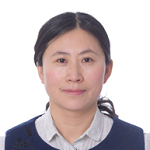
Title: Synthesis of high-performance transparent conductive films and their applications
Keynote Talk
Prof. Peng-Xiang Hou
Keynote Talk
Abstract
Single-wall carbon nanotubes (SWCNTs) are an ideal material for replacing widely used metal oxides as transparent conducting films (TCFs). However, the performance of SWCNT TCFs is still not as good as ITO and falls far short of what might be expected from the electrical and optical properties of individual SWCNTs. Junction resistance and bundling are recognized as the two major issues accounting for the poor performance of SWCNT TCFs. Here, we demonstrate the synthesis of high performance SWCNT TCFs by controlling bundle sizes or isolated nanotube contents and introducing carbon-welded strucutre on inter-tube junctions. It is found that the carbon-welded joints convert the Schottky contacts between metallic and semiconducting SWCNTs into near-ohmic ones, which significantly improves the conductivity of the transparent SWCNT network. And the small bundle/isolate tubes in SWCNT network contriutes to more light transmission. In consequence, high performance SWCNT films are obtained which show a record low sheet resistance of 41 Ω/sq at 90% transmittance for 550 nm light. In addition, flexible OLEDs using a pristine SWCNT film as anodes show an outstanding optoelectronic performance and excellent flexibility. The maximum current and power efficiencies are 75 cd A-1 and 89.5 lm W-1, respectively, which are the best to date for CNT-based OLEDs, and comparable to those of ITO-based OLEDs. We further investigated the applications of SWCNT TCFs in heterjuction solar cells, perovskite solar cells, and photodetectors.
Biography
Dr. Peng-Xiang Hou is currently Professor at the Institute of Metal Research (IMR), Chinese Academy of Sciences (CAS). She obtained her PhD degree in 2003. Then, she joined Professor Takashi Kyotani’s group as a JSPS Fellow at Tohoku University. In 2007, she joined IMR where her research interests include the synthesis, characterization and application of carbon nanotubes for applications in nanoelectronics. She has published more than 110 peer-reviewed papers in high impact journals, including Science, Nature Communications, Advanced Materials, ACS Nano, etc. The total citations of the published papers are more than 8000.

Title: Identification of Solids for True Design and Detailed Characterization of Functional Materials
Plenary Talk
Prof. Bunsho Ohtani
Hokkaido University, Japan
Abstract
How can we design functional solid materials, such as catalysts and photocatalysts? What is the decisive structural parameters controlling their activities, performance or properties? What is obtained as structural properties by popular conventional analytical methods, such as X-ray diffraction (XRD) or nitrogen-adsorption measurement, is limited to bulk crystalline structure and specific surface area, i.e., no structural characterization on amorphous phases, if present, and surface structure has been made so far. This is because there have been no macroscopic analytical methods to give surface structural information including possibly-present amorphous phases. Recently, we have developed reversed double-beam photoacoustic spectroscopy (RDB-PAS) which enables measure energy-resolved distribution of electron traps (ERDT) for semiconducting materials such as metal oxides [1,2]. Those detected electron traps (ETs) seem to be predominantly located on the surface for almost all the metal oxide particles, and therefore they reflect macroscopic surface structure, including amorphous phases, in ERDT patterns. Using an ERDT pattern with the data of CB bottom position (CBB), i.e., an ERDT/CBB pattern, it has been shown that metal oxide powders, and the other semiconducting materials such as carbon nitride, can be identified without using the other analytical data such as XRD patterns or specific surface area, and similarity/differentness of a pair of metal-oxide samples can be quantitatively evaluated as degree of coincidence of ERDT/CBB patterns. In this talk, an approach of material design based on the ERDT/CBB-pattern analyses is introduced [3,4].
Biography
The research on photocatalysis started in 1981 as a Ph. D. student in Kyoto University. Since then, he has been studying photocatalysis for > 40 years and published more than 300 original papers (h-index: 72). After gaining his Ph. D. degree from Kyoto University in 1985, he became an assistant professor in the university. In 1996, he was promoted to an associate professor in Graduate School of Science, Hokkaido University and was awarded a full professor in the Catalysis Research Center (presently Institute for Catalysis), Hokkaido University in 1998. He was awarded several times from the societies related to chemistry.
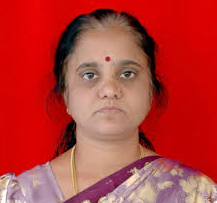
Title: Computation of Combined Electrical and Magnetic Field Effects on Dissipative Immiscible Newtonian Fluid/Nanofluid Dynamics
Plenary Talk
Prof. J.C. Umavathi
Gulbarga University, India
Abstract
This article presents numerical simulations for nonlinear mixed convection heat transfer in an enclosure divided into two immiscible regions comprising a non-conducting Newtonian viscous fluid and an electromagnetic viscous nanofluid. The enclosure walls i.e. parallel vertical plates are sustained at constant asymmetric temperatures and the top and base walls are shielded. An interfacial stress condition is employed at the junction between the two immiscible fluid zones. The Tiwari-Das nanoparticle fraction model is deployed. The coupled transport equations for both a Newtonian fluid and a Newtonian electromagnetic nanofluid are formulated, rendered dimensionless and then solved numerically with finite difference method adopting the efficient Southwell Over-Relaxation (SOR) method subject to appropriate boundary conditions. The influence of pertinent parameters including the Grashof (thermal buoyancy) number, Brinkman (viscous dissipation) number, Hartmann (magnetic) number, electric field load parameter, nanoparticle solid volume fraction in addition to different nanoparticles (metallic and carbon-based) and base fluid material properties on the thermo-convection flow characteristics are discussed. The results indicate that flow rate is boosted with increasing convective and viscous dissipations, and electric field load parameter and it is depleted with greater Hartmann number and solid volume fraction reduce the flow rate. Significant elevation in both velocity and energy is produced with increasing electric load parameter (both short and open circuit cases). An increment in Grashof number decelerates the flow adjacent to the left plate and accelerates the flow at the opposite wall. The combined action of electrical and magnetic field exerts a more dramatic influence on transport characteristics compared with thermal buoyancy (Grashof number). By adding different nanoparticles (e.g. aluminium oxide, copper oxide and graphite oxide) and using alternative base fluids (blood, water and engine oil), more noticeable modifications in heat and momentum characteristics are achieved with copper oxide nanoparticles. The study finds applications in nano-doped electromagnetic hybrid fuel cells, medical flow processing (electromagnetic blood flow meters), sensing systems in chemical engineering etc.
Biography
Biography Prof. J.C. Umavathi, Gulbarga University, India J.C. Umavathi completed her Post Doctral from the Department of Engineering, University of Sannio, Piazza Roma 21, 82100 Benevento, Italy. She is working as Professor in the Department of mathematics, Gulbarga University since 1993. She has published more than 215 research articles in reputed international journals. She is a recipient of Kalpana Chawla Young Scientist award, Sir J.C. Bose award and Erasmus Mundus Fellowship.
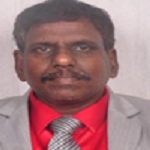
Title: Biomedical engineering in Coronary artery stenting
Invited Speaker Talk
Dr. Ramachandran Muthiah
Thoothukudi Medical College, India
Abstract
Technological advancements of coronary stents have progressively revolutionized the treatment of ischemic heart disease over the past 40 years.The process of atherogenesis is beyond the mere accumulation of lipids, as it presents a series of responses characteristic to inflammatory disease .Repeated episodes of ischemia are a potential source of the inflammatory stimulus1, and the so-called “ inflammatory hypothesis ”is now a targeted, therapeutic area in clinical and experimental cardiology. However, coronary artery disease (CAD) could become chronic (arteries narrowing over time) or acute (resulting from a sudden rupture of plaque), necessitating stent-based clinical intervention, to unblock arteries and regulate normal blood flow. A stent forms a tiny wire mesh tube designed to remain permanently implanted at the intended site.
Although bare metal stents (BMS) prevented abrupt occlusion/recoil for reproducible clinical outcomes, the challenge of in-stent restenosis (re-narrowing artery wall after stent implantation) is troublesome. Drug eluting stents (DES) introduced , primarily addressed in-stent restenosis. Nanotechnology during PCI promote healing by inducing endothelialization of the stent and reduce restenosis. Endothelial healing and re-endothelialization may restore the injured vessel. Nano-sized hydroxyapatite coating, carbon nanoparticle coated stents with consistent release of sirolimus, pitavastatin and Magnetic silica nanoparticles with rapamycin exhibit endothelialization in vitro-studies. Liposome encapsulated alendronate (a biphosphonate), an antimitotic drug (paclitaxel) in the form of albumin - based nanoparticles with significant antiproliferative effects can reduce restenosis and neointimal hyperplasia in animal models. An in-depth review of bioresorbable stents and scaffolds deserve a separate entity. Electrospunnanosized fibrous scaffolds, Synthetic alternatives for coronary artery bypass grafts were studied in graft procedures.
Biography
Ramachandran Muthiah, born on 10/5/1966 in a small village at Keezkulam and father (Muthiah) belongs to Enayam Thoppu and mother (Swornam) belongs to Keezhkulam.. Primary school education at Aanan vilai primary school at Keezhkulam and secondary school education at Concordia higher secondary school at Pootteti in Theruvukadai near Karungal in Kanyakumari District in Tamil nadu state of India. Completed MBBS in 1989 under Madurai Kamaraj University in Tirunelveli medical college, M.D. in General Medicine in 1996 under MGR medical university in Tirunelveli medical cullege, D.M. in cardiology in 2003 at Madurai medical college under Tamil Nadu Dr.MGR Medical University,Chennai and completed 6 months course in Interventional cardiology at Batra Heart centre under National board of examinations, Ministry of health, Govt of India, New Delhi in 2006 . Worked as medical officer in Rural health services for 5 years and in teaching category as Assistant Professor at Madras medical college, Coimbatore medical college, Thoothukudi medical college and Professor at Dr.SMCSI Mission hospital & Medical college, Karakonam, Trovandrum and Azeezia Medical college, Kollam. Marrital status get troubled in 2004 at Coimbatore, career get spoiled thereafter in Tamil nadu and kerala states via some irrational men in higher cadre and suffered a lot as police arrest, psychiatric custody and jail imprisonment in both Tamil nadu and kerala states of India through its police, political, medical and judiciary sectors.. Published many papers in Cardiosource, American College of Cardiology Foundation, Case Reports in Clinical Medicine (SCIRP) and Journal of Saudi Heart Association. Special research on Rheumatic fever and Endomyocardial fibrosis in tropical belts, Myxomas, Ineffective endocarditis, apical hypertrophic cardiomyopathy, Ebstein’s anomaly, Rheumatic Taussig-Bing Heart, Costello syndrome and Tetralogy of Fallot.

Title: Dynamic Responses Measured by Fiber Bragg Grating Sensors
Speaker
Prof. Shiuh-Chuan Her
Yuan Ze University, Taiwan
Abstract
Basing on the shift of Bragg wavelength, fiber Bragg grating sensors (FBG) have been employed to measure a variety of physical parameters such as stress, strain, displacement, temperature, vibration and pressure. FBG with small size, light weight, immunity to electromagnetic interference (EMI) and corrosion and embedding capability has demonstrated its inherent advantages for integration in civil structures. In this work, the FBG was connected to an optical spectrum analyzer (OSA) to measure the mechanical strain. The measuring results were validated by a strain gauge with an error less than 5 %. In order to measure the dynamic responses, the FBG was incorporated with an optical filter and photo detector to convert the shift of Bragg wavelength to a change of light intensity. The experimental tests of dynamic three-point bending test and free vibration test of a cantilever beam were presented to demonstrate the capability of measuring dynamic responses using FBG sensors.
Biography
Shiuh-Chuan Her has received his PhD from University of California Los Angeles, USA. He is professor of Department of Mechanical Engineering, Yuan Ze University, Taiwan. He has published more than 50 papers in reputed journals.
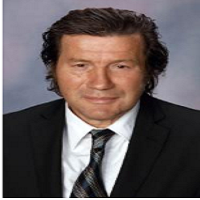
Title: Smart Technologies for the Third Millennium
Plenary Talk
Prof. Eduard Babulak
National Science Foundation, United States
Abstract
The Third millennium is the beginning of a new era of the smart technologies, while creating a platform for the smart cyberspace connecting seamlessly billions of computing devices worldwide 24/7. The Artificial Intelligence will drive 24/7 ubiquitous connectivity with 5G and 6G communications infrastructures. The current advancements in AI, Fast Internet, Big Data, Robotics [1- 2] drive national and local economies worldwide. The pervasive ultra-smart AI driven computation in the cyber critical infrastructures, in conjunction with the smart sensors and Internet of Things IoT provide great support in tele-medicine, manufacturing industry, agriculture, business, and defense [3-5]. Ultra-smart Computational Devices seamlessly interconnected via Ultrafast Internet are applied effectively in the field of medicine, automated industry, e-business, and e-government. The evolution of smart technologies will contribute to creation of fully automated cyberspaces all around us [6]. The author believes that we have just scratched the surface of a completely new era of Future Smart Technologies. We are at the beginning of learning new research and design concepts of truly smart technologies that will be environmentally friendly. The author promotes creation of global inter-disciplinary teams working together to drive research, innovation and developments of future technologies for the betterment of mankind.
Biography
Professor Dr. Eduard Babulak is accomplished international scholar, researcher, consultant, educator, professional engineer and polyglot, with more than thirty years of experience. He served as successfully published and his research was cited by scholars all over the world. He speaks 16 languages and his biography was cited in the Cambridge Blue Book, Cambridge Index of Biographies, Stanford Who’s Who, and number of issues of Who’s Who in the World and America.

Title: Challenges in Augmented and Virtual Reality
Keynote Talk
Prof. Hoshang Kolivand
Liverpool John Moores University,UK
Abstract
There is no doubt that Augmented and Virtual Reality(AR/VR) has changed the world recently and has the potential to become a fascinating widespread requirement in daily life. In about two decades, AR/VR has turned into one of the most attractive topics involved in a variety of topics attempting to obtain satisfactory results. In this speech, I am going to present what I have done so far with AR and VR and new technologies. Current advances and future directions of AR/VR and wearable devices will be discussed with an eye on revenue of this technology How to engage our current research with new technology to enhance our current research will be the next part of my speech.
Biography
Hoshang Kolivand is Visiting professor at Barath University, India and a Reader in Intelligent Mixed Reality at the School of Computer Science and Maths, Liverpool John Moores University, UK. He received his MSc degree in Applied Mathematics and Computer Science from Amirkabir University of Technology, Tehran, Iran, and his PhD from Universiti Teknologi Malaysia (UTM) in 2013. His background is in 3D maths & Computer Graphics in particular Augmented and Virtual Reality. Over 150 international publications in the area of 3D visualisation, immersive technology & human Computer Interaction. A global leader in this field invited to address the current & future advances of immersive technology in several high-ranked international events.
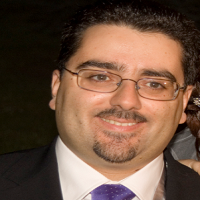
Title: The importance of the Logistics within the Cybersecurity Audits in the Navigation Sector
Invited Speaker Talk
Dr. Jose Ramon Coz Fernandez
European Space Agency, Netherlands
Abstract
The Navigation sector represents a relevant economic sector, and the navigation programs represent currently one of the biggest investments in Europe. According to the European Union Space Policy, the GNSS (Global Navigation Satellites Systems) programs play an important role, and the estimated budget for the space programme, according to the current status of the multiannual financial framework for 2021-2027, is around 14 billion euros in current prices. The cybersecurity audits are considered critical within these programs. The cybersecurity audits are described as the evaluation of the level of compliance of the information security management system and implemented security measures with defined requirements, security policies in place and the appropriate safety standards. The conference will highlight the importance of the logistics when performing the planning phase of these cybersecurity audits, and the most relevant lessons learnt at the European Space Agency about this topic. The number of interfaces and interdependencies in these systems, the increasing trend in subcontracting parts of the systems, the technical and legal requirements and the high number of facilities involved make the process really complex. In this conference, the author will introduce the concept of cybersecurity audits, explain some of the factors that contribute to the complexity of the projects in the space sector along the supply chain, and describe how the logistic is impacting the audit process to conclude with some recommendations to be taken into account to facilitate the process.
Biography
Dr. Jose Ramon Coz finished his PhD degree in Economy at the Complutense University (Madrid). As well, he finished a second PhD degree in Computer Engineering at the UNED University (Madrid). He holds a M.S in Physics (University of Cantabria), a M.S. in Economics (Complutense University) and several graduate degrees in Telecommunications and Public Management (Polytechnic University of Madrid). He has more than twenty years of experience in the field of auditing and cybersecurity. Currently working as the Cyber Internal Auditor at the European Space Agency, and as professor at several institutions and universities.
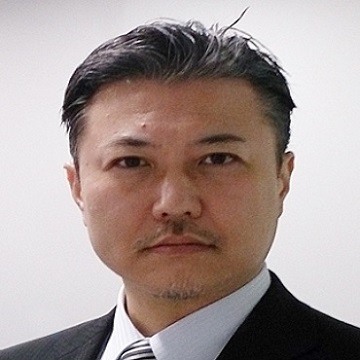
Title: Stereolithographic Additive Manufacturing of Ceramic Components with Functionally Modulated Dimensions
Keynote Talk
Prof. Soshu Kirihara
Osaka University, Japan
Abstract
In stereolithographic additive manufacturing (STL-AM), 2D cross sections were created through photo polymerization by UV laser drawing on spread resin paste including nanoparticles, and 3-D models were sterically printed by layer lamination. The lithography system has been developed to obtain bulky ceramic components with functional geometries. An automatic collimeter was newly equipped with the laser scanner to adjust beam diameter. Fine or coarse beams could realize high resolution or wide area drawings, respectively. As the row material of the 3D printing, nanometer sized metal and ceramic particles were dispersed into acrylic liquid resins at about 60 % in volume fraction. These materials were mixed and deformed to obtained thixotropic slurry. The resin paste was spread on a glass substrate at 50 μm in layer thickness by a mechanically moved knife edge. An ultraviolet laser beam of 355 nm in wavelength was adjusted at 50 μm in variable diameter and scanned on the spread resin surface. Irradiation power was changed automatically for enough solidification depth for layer bonding. The composite precursors including nanoparticles were dewaxed and sintered in the air atmosphere. In recent investigations, ultraviolet laser lithographic additive manufacturing (UVL-AM) was newly developed as a direct forming process of fine metal or ceramic components. As an additive manufacturing technique, 2D cross sections were created through dewaxing and sintering by UV laser drawing, and 3D components were sterically printed by layer laminations with interlayer joining. Though the computer aided smart manufacturing, design and evaluation (Smart MADE), practical materials components were fabricated to modulate energy and material transfers in potential fields between human societies and natural environments as active contributions to Sustainable Development to Goals (SDGs).
Biography
Soshu Kirihara is a doctor of engineering and a professor of Joining and Welding Research Institute (JWRI), Osaka University, Japan. In his main investigation “Materials Tectonics” for environmental improvements of “Geotechnology”, multi-dimensional structures were successfully fabricated to modulate energy and materials flows effectively. Ceramic and metal components were fabricated directly by smart additive manufacturing, design and evaluation (Smart MADE) using high power ultraviolet laser lithography. Original stereolithography systems were developed, and new start-up company “SK-Fine” was established through academic-industrial collaboration.
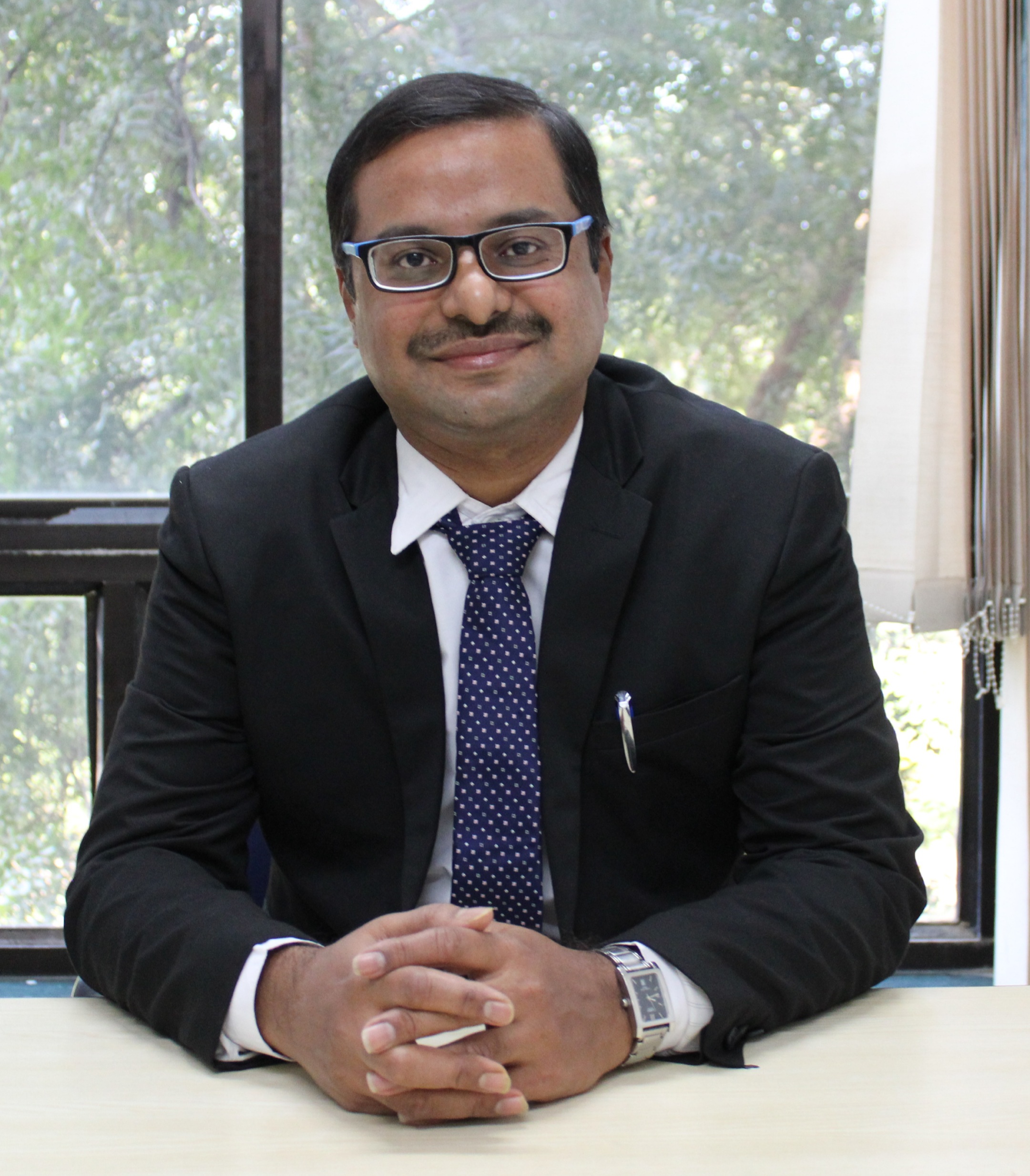
Title: RESEARCH TRENDS IN ARTIFICAL INTELLIGENCE
Keynote Talk
Dr. Sailesh Iyer
Rai University, India
Abstract
Artificial Intelligence has experienced enormous transformation from 1995 to 2022. AI (Machine Learning and Deep Learning) has innumerable use cases in various domains.
This Keynote Speech would focus on various Research Trends in Artificial Intelligence, Machine Learning and Deep Learning including Smart Cities and Smart Villages. Various technological challenges and advancements in Agriculture, Rural Education, Urban Planning, Smart Healthcare and solutions would be discussed in detail.
Biography
Dr. Sailesh Iyer has a Ph.D. (Computer Science) and currently serving as a Professor with Rai University, Ahmedabad. He has more than 22 years of experience in Academics, Industry and Corporate Training out of which 18 years are in core Academics. In addition to Patents, he is involved as an Editor for 6 book projects with River Publishers (Denmark), IGI Global(USA), Taylor and Francis(UK) and Bentham Science (UAE). A hardcore Academician and Administrator, he has excelled in Corporate Training, Delivered Expert Talk in various AICTE sponsored STTP’s, ATAL FDP’s, Reputed Universities, Government organized Workshops, Orientation and Refresher Courses organized by HRDC, Gujarat University. Research Contribution include reputed Publications, Track Chair and TPC Member for various reputed International and National Conferences, Reviewer of International Journals like Multimedia Tools and Applications (Springer), Journal of Computer Science (Scopus Indexed), International Journal of Big Data Analytics in Healthcare (IGI Global), Journal of Renewable Energy and Environment and Editor in various Journals. Expert Talk on Research based topics in various Universities and Conferences in addition to guiding Research Scholars as Supervisor. He has also been invited as a Judge for various events, Examiner for Reputed Universities, is a Computer Society of India Lifetime Member and was serving as Managing Committee (MC) Member, CSI Ahmedabad Chapter from 2018-2020. Research interest areas include Computer Vision and Image Processing, Cyber Security, Data Mining and Analytics, Artificial Intelligence, Machine Learning, Blockchain.
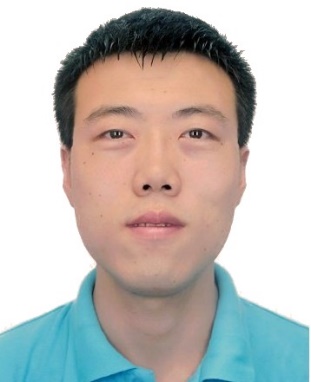
Title: Blocking ion migration to improve the stability of unencapsulated perovskite solar cell
Keynote
Dr. Yang Li
University of Macau, China
Abstract
Perovskite solar cells (PSCs) witnessed an impressive development towards commercialization in the past few years. However, the ion migration inside PSCs hinders further enhancement on their long-term stability and influences the device performance. Among all fabrication technologies for n-i-p PSCs, ions blocking layer (IBL) plays an important role in enhancement of device stability. Herein, we have developed two kinds of spiro-structured small molecules, named S1 and S2, as IBLs in n-i-p PSCs. The device based on S2 exhibits excellent long-term stability, which remains 95% of its initial efficiency after storage in ambient (around 40% humidity) for more than 3000 h. Our methodology paves out a path for fabricating more efficient and stable PSCs. Besides, due to the improved crystallinity of perovskite film and enlarged charge carrier length enlarged caused by surface passivation effect, the device based on S2 exhibits steady power conversion efficiency (PCE) above 21% at maximum power point (MPP), surpassing the pristine one without IBL (18.5%).
Biography
Yang Li received a Bachelor’s Degree from Lanzhou University on Pharmacy in 2011. He moved to Gachon University in South Korea to pursue a Master’s Degree on Nano-physics in 2014. Right now he is in Prof. Guichuan Xing’s group as a PhD student in University of Macau. His research mainly focuses on perovskite solar cells and the internal mechanism explanation. He has published 7 peer-reviewed SCI papers on solar cells and presented in conferences at home and abroad.
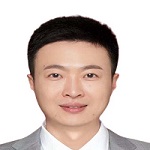
Title: Specialty Optical Ring Fibers Supporting OAM Modes for Future Optical Communication System
Plenary Talk
Prof. Yang Yue
Xi'an Jiaotong University, China
Abstract
Orbital angular momentum (OAM) multiplexing technology is expected as one of the prospective candidates for sustaining the further increment of data-transmission capacity in the optical communication systems. An OAM-carrying beam has a doughnut shaped intensity profile due to its twisted helical phase front. Besides, the amount of 2π phase shift that occurs in the azimuthal direction represent different states or modes, which are orthogonal to each other while propagating coaxially. These properties enabled researchers to push the frontiers of OAM in optical communication systems. The complex multiplexing formats of combining mode division multiplexing (MDM) technology based on OAM modes with dense space-division multiplexing (DSDM) along multicore/multimode fibers can be utilized to further improve the transmission rate and spectrum efficiency.
In this talk, we will review our recent work on new type fibers support numerous OAM modes. Firstly, we design an air-core fiber with a single As2S3 high-index thin ring, which can support 1322 OAM modes at 1550 nm while maintaining single radial mode condition. Based on this fiber material, we further introduce the concept of multi-ring fiber and propose a multi-ring air-core chalcogenide fiber, which has 37 rings and can support a record high 4440 radially fundamental OAM modes at 1550 nm, featuring low inter-ring crosstalk and large intra-ring modal effective refractive index difference. The chalcogenide material is promising but it could lead to the relatively low mode purity. It might be more suitable to be utilized in short-distance applications such as short-reach optical interconnect in data centers and high-performance computers. In this case, we propose a 7-ring-core Ge-doped fiber and it can provide 434 OAM modes across C and L bands. The 7-ring-core Ge-doped fiber has relatively high mode purity and has great potential to increase the spectral efficiency and the overall capacity in long-distance fiber-based communications system.
Biography
Yang Yue received the B.S. and M.S. degrees in electrical engineering and optics from Nankai University, China, in 2004 and 2007, respectively. He received the Ph.D. degree in electrical engineering from the University of Southern California, USA, in 2012. He is a Professor with the School of Information and Communications Engineering, Xi'an Jiaotong University, China. Dr. Yue’s current research interests include intelligent photonics, optical communications and networking, optical interconnect, detection, imaging and display technology, integrated photonics, free-space and fiber optics. He has published over 200 peer-reviewed journal papers (including Science) and conference proceedings with >9,000 citations, four edited books, >50 issued or pending patents, >100 invited presentations (including 1 tutorial, >10 plenary and >30 keynote talks). Dr. Yue is a Senior Member of the Institute of Electronic and Electrical Engineers (IEEE). He is an Associate Editor for IEEE Access, and an Editor Board Member for three other scientific journals. He also served as Guest Editor for eight journal special issues, Chair or Committee Member for >80 international conferences, Reviewer for >60 prestigious journals.
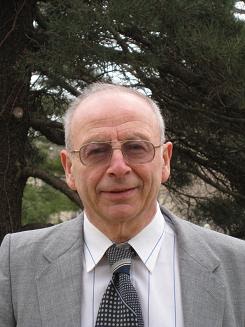
Title: How to create materials with a desired refraction coefficient?
Plenary Talk
Prof. Alexander G. Ramm
Kansas State University, USA
Abstract
The novel points in this work are: 1) Asymptotic and numerical methods for solving wave scattering problem by many small bodies embedded in a non-homogeneous medium. 2) Derivation of the equation for the field in the limit a → 0, where a is the characteristic size of the bodies (particles), and their number M = M(a) tends to infinity at a suitable rate. Multiple scattering is taken into account. 3) A recipe for creating materials with a desired refraction coefficient by embedding many small particles in a given material. 4) Discussion of possible applications: a) creating materials with negative refraction, b) creating materials with a desired radiation pattern
Biography
Alexander G. Ramm was born in Russia, emigrated to the USA in 1979 and is a US citizen. He is Professor Emeritus of Mathematics with broad interests in analysis, scattering theory, inverse problems, theoretical physics, engineering, signal estimation, tomography, theoretical numerical analysis and applied mathematics. He is an author of 708 research papers, 20 research monographs and an editor of 3 books. He has lectured in many Universities throughout the world, gave about 155 invited and plenary talks at various Conferences and had supervised 11 Ph.D. students. He was Fulbright Research Professor in Israel and in Ukraine, distinguished visiting professor in Mexico and Egypt, Mercator professor in Germany, research professor in England, France, Spain, Italy, Japan, China, Sweden, Turkey, Australia and other countries, invited plenary speaker at the 7-th PACOM in Africa, he won Khwarizmi international award in 2004, and received many other honors. A. G. Ramm has solved inverse scattering problems with fixed-energy scattering data, with non-over-determined scattering data and studied scattering problems with under-determined scattering data. He solved many specific inverse problems and developed new methods in this area. He solved the many-body wave scattering problem when the bodies are small particles of arbitrary shapes and used this theory to give a recipe for creating materials with a desired refraction coefficient. These results attracted the attention of the scientists working in nanotechnology. He gave formulas for the scattering amplitude for scalar and electromagnetic waves by small bodies of arbitrary shapes and formulas for the polarizability tensors for such bodies. He gave a complete solution to the Pompeiu problem, proved Schiffer's conjecture and gave first symmetry results in harmonic analysis. He has developed the Dynamical Systems Method (DSM) for solving linear and nonlinear operator equations, especially ill-posed. He developed a random elds estimation theory. He proved nonlinear inequalities and used these for obtaining new results in stability theory. He studied convolution integral equations and inequalities with hyper-singular integrals. Recently, he solved the millennium problem (concerning the Navier-Stokes problem (NSP)) and proved the paradox in the NSP which shows the contradictory nature of the NSP and the non-existence of its solution for the initial data which is not identically equal to zero.
“ Will be updated soon...”
+91 9491 456 452
Door No.200, Immidhihalli Main Road, Whitefield-560066, Bangalore, India
About Us
Global Scientific Guild organizes conferences and webinars to promote quality research and real world impact in an atmosphere of true international co-operation between scientists, doctors, professors, practitioners, engineers and industry by bringing together the world class renowned personalities to discuss the latest developments and innovations at one common platform.